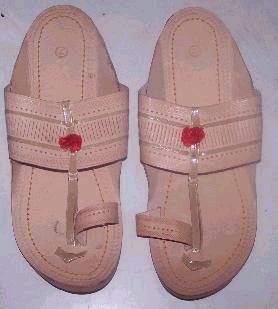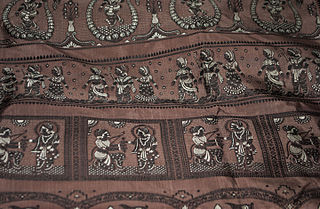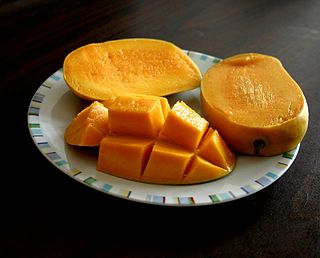Related Research Articles

Leather is a strong, flexible and durable material obtained from the tanning, or chemical treatment, of animal skins and hides to prevent decay. The most common leathers come from cattle, sheep, goats, equine animals, buffalo, pigs and hogs, and aquatic animals such as seals and alligators.

Vellore is a city and the administrative headquarters of Vellore district in the Indian state of Tamil Nadu. It is located on the banks of the Palar River in the northeastern part of Tamil Nadu and is separated into four zones that are further subdivided into 60 wards, covering an area of 87.915 km2 and housing a population of 423,425 as reported by the 2001 census. It is located about 137.20 kilometres (85 mi) west of Chennai, and about 213.20 kilometres (132 mi) east of Bangalore. Vellore is located on the Mumbai–Chennai arm of the Golden Quadrilateral. Vellore is governed under a mayor and the Vellore Municipal Corporation. It is a part of both the Lok Sabha and state assembly constituencies of Vellore.

Dharavi is a locality in Mumbai, Maharashtra, India, considered to be one of Asia's largest slums. Dharavi has an area of just over 2.1 square kilometres and a population of about 1,000,000. With a population density of over 277,136/km2 (717,780/sq mi), Dharavi is one of the most densely populated areas in the world.

Erode is a city in the Indian state of Tamil Nadu. Erode is the seventh largest urban agglomeration in the state, after Chennai, Coimbatore, Madurai, Tiruchirapalli, Tiruppur and Salem. It is also the administrative headquarters of the Erode district. Administered by a city municipal corporation since 2008, Erode is a part of Erode Lok Sabha constituency that elects its member of parliament. Located on the banks of River Kaveri, it is situated centrally on South Indian Peninsula, about 400 kilometres (249 mi) southwest of its state capital Chennai, 250 kilometres (155 mi) south of Bengaluru, 100 kilometres (62 mi) east of Coimbatore and 275 kilometres (171 mi) east of Kochi. Erode is an agricultural, textile and a BPO hub and among the largest producers of turmeric, hand-loom and knitwear, and food products.

Tangra is a region in East Kolkata that traditionally housed many tanneries owned by people of Hakka Chinese origin.

A Banarasi sari is a sari made in Varanasi, an ancient city which is also called Benares (Banaras). The saris are among the finest saris in India and are known for their gold and silver brocade or zari, fine silk and opulent embroidery. The saris are made of finely woven silk and are decorated with intricate design, and, because of these engravings, are relatively heavy.

Ambur is a town and municipality in newly announced Tirupattur District, Tamil Nadu, India. It is located on the banks of the Palar River between Chennai and Bangalore. Ambur has a sizeable leather industry, and is known for its spicy biryani and for the sweet, makkhenpeda. Ambur was the site of two major military actions in the 18th Century. The first was the 1749 Battle of Ambur that opened the Second Carnatic War between the Arcot State and the Mughal Empire. In 1767, the siege of Ambur took place during the First Anglo-Mysore War, with local troops and a British force successfully resisting an attack by the Kingdom of Mysore and by the Hyderabad State.

Ostrich leather is the result of tanning skins taken from African ostriches farmed for their feathers, skin and meat. The leather is distinctive for its pattern of bumps or vacant quill follicles, ranged across a smooth field in varying densities. It requires an intricate, specialised and expensive production process making its aesthetic value costly.

Thirumalachari Ramasami is the former Indian Science and Technology Secretary. He assumed charge in May 2006. Prior to this assignment, he served as the Director of the Central Leather Research Institute, Chennai, India. He is a distinguished researcher and leather scientist. He was awarded India's National Civilian Honour the Padma Shri for excellence in Science and Engineering in 2001 and the Padma Bhushan in 2014. He was awarded the Shanti Swarup Bhatnagar Award, the highest award for science in India, for notable and outstanding research in Chemical Sciences in 1993.

Hidesign is a leather goods manufacturer based in Pondicherry, India. In 2018, the company had operations in 24 countries including the United States, United Kingdom, Australia, Kenya, United Arab Emirates, Spain, Portugal, New Zealand and Sri Lanka. The leather goods segment of Hidesign contributes to 160 crore of revenue.

Kolhapuri chappals are Indian decorative hand-crafted and braided leather slippers that are locally tanned using vegetable dyes. Kolhapuri Chappals or Kolhapuris as they are commonly referred to are a style of open-toed, T-strap sandal, but also braided leather Mules or braided leather shoe type designs are also common.

Bikaneri bhujia, often simply called bhujia, is a popular crispy snack prepared by using moth bean flour and besan and spices, originating from Bikaner, a city in the western state of Rajasthan in India. It is light yellow in colour. Bhujia has become not just a characteristic product of Bikaner, but also a generic name.

Baluchari Sari is a type of sari, a garment worn by women in Bangladesh and Indian States of West Bengal. This particular type of sari originated in West Bengal and is known for depictions of mythological scenes on the pallu of the sari. It used to be produced in Murshidabad but presently Bishnupur and its surrounding areas of West Bengal are the only place where authentic Baluchari saris are produced. It takes approximately one week to produce one such sari. In 2011, the Baluchari Sari was granted the status of Geographical Indication for West Bengal in India.
Kovai Cora cotton or Kovai Kora cotton is a type of saree made in the Coimbatore region in Tamil Nadu, India. It has been recognized as a Geographical indication by the Government of India in 2014–15. The Devanga community are pioneers in weaving Kovai Kora cotton saris. 82 Weaver cooperative Societies in Coimbatore, Tiruppur and Erode are authorised to sell Kovai Kora cotton saris.
Vellore, located in Tamil Nadu, India, has a diversified economy, primarily based in leather processing, shoe manufacturing, automobile assembly, precision tool milling, explosive materials production, and the service industry.

The Kolkata Leather Complex is an industrial complex at Karaidanga, Bantala near East Kolkata, India. It is located 20 km from the central business district of Kolkata and has an area of about 4.5 square kilometres.

Tannery Road is located in the North East of Bangalore Cantonment, India. It is a 4 km long narrow road with around 700 shops, named after the tanneries of the British India period located at the end of the Road. Tannery Road was officially renamed as Dr B S Ambedkar Road many years back, but it still is referred to by its old name. Tannery Road touches Fraser Town, Richards Town, Giddappa Block, Periyar Nagar and Pillanna Garden. The Tannery Road area is highly populated with a high density. The suburb presents a picture which is a shocking contrast to the hi-tech image of Bangalore. As elections has not brought about any changes, the residents express disillusionment with politicians and politics. Pot-holes and broken pavements are a common feature of Tannery Road, in addition to heavy traffic, water problems, garbage, etc. There is scant respect for traffic rules, and vehicles of all types zoom past in all directions. Residents have to dodge puddles of dirty water and garbage, to move around.

The 'Gir Kesar' mango, also called Kesar, is a mango cultivar grown in the foothills of Girnar in Gujarat, western India. The mango is known for its bright orange colored pulp and was given the geographical indication status in 2011. The biggest market of Gir Kesar is in Talala Gir known as a Mango Market Yard.

Santiniketan Leather Goods are leather products made in Santiniketan and surrounding villages near Kolkata, West Bengal, India. The material used is vegetable tanned leather with art work done by touch dyeing. Its artistic leather bags are popular in foreign markets and are exported to many countries including Japan and the U.S. They are generally made of E. I. Leather from sheepskin and goatskin.
References
- ↑ "EI leather approved, registered as exclusive geographical product". The Hindu . 12 July 2008. Archived from the original on 15 July 2008.
- ↑ Joseph Vackayil. "Need to explore niche markets for EI leather". The Financial Express.
- ↑ "TN tanners demand abolition of duty on leather exports". Archived from the original on 16 February 2013.
- ↑ BS Reporter (24 July 2008). "East India leather gets GI tag".
- ↑ "Only 9 products have got GI status so far". The Hindu Business Line.